IL License Number: 104.017181
IL License Number: 104.017181
When it’s time to replace your roof, selecting the right material goes far beyond looks. Your choice directly affects the roof’s durability, energy efficiency, resistance to algae and mold, and long-term performance in our Northwest Chicago climate. This guide put together by Holda Construction Roofing & Siding walks you through the most popular roofing materials, their benefits and drawbacks, and critical considerations like algae resistance, ventilation, and warranty protection—so you can make a confident and informed decision.
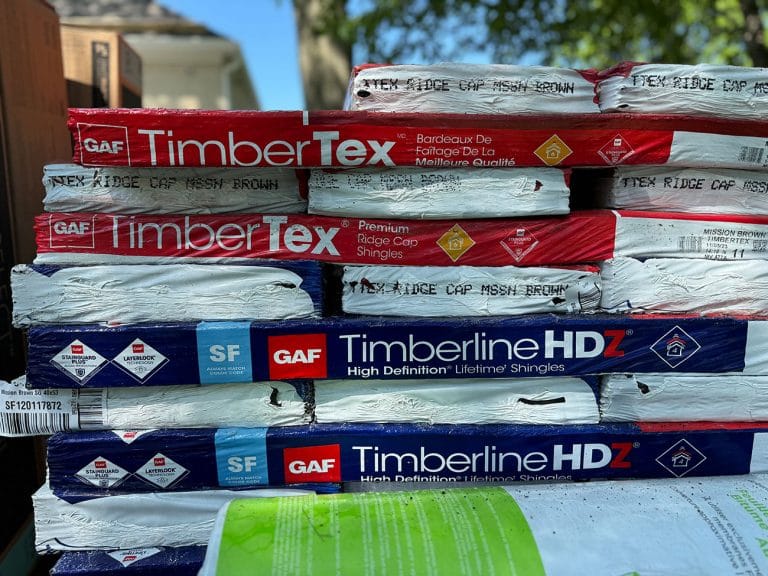
Asphalt shingles are Holda’s most popular roofing medium and the most widely used roofing material in the U.S. for good reason: they are affordable, durable, and available in many styles to suit almost any home.

3-Tab Shingles: Flat and uniform in appearance, these are the most affordable option, though they offer shorter lifespan and minimal resistance to algae. Popular brands include:
Dimensional (Architectural) Shingles: These shingles feature a layered, textured appearance and are today’s most popular option. They mimic wood shake for added aesthetic appeal. This type of shingle is the most popular choice for our customers, with popular brands being:
Luxury or Premium Shingles: Designed to resemble slate or wood, these high-end shingles offer exceptional curb appeal and increased durability at a higher price point. Popular brands include:
Algae can create dark streaks and reduce curb appeal. Fortunately, there are many successful strategies for preventing algae on a roof, and the leading manufacturers offer algae-resistant shingles:
See examples of both roof repairs and complete roof replacements we have completed in the Northwest Suburbs of Chicago.
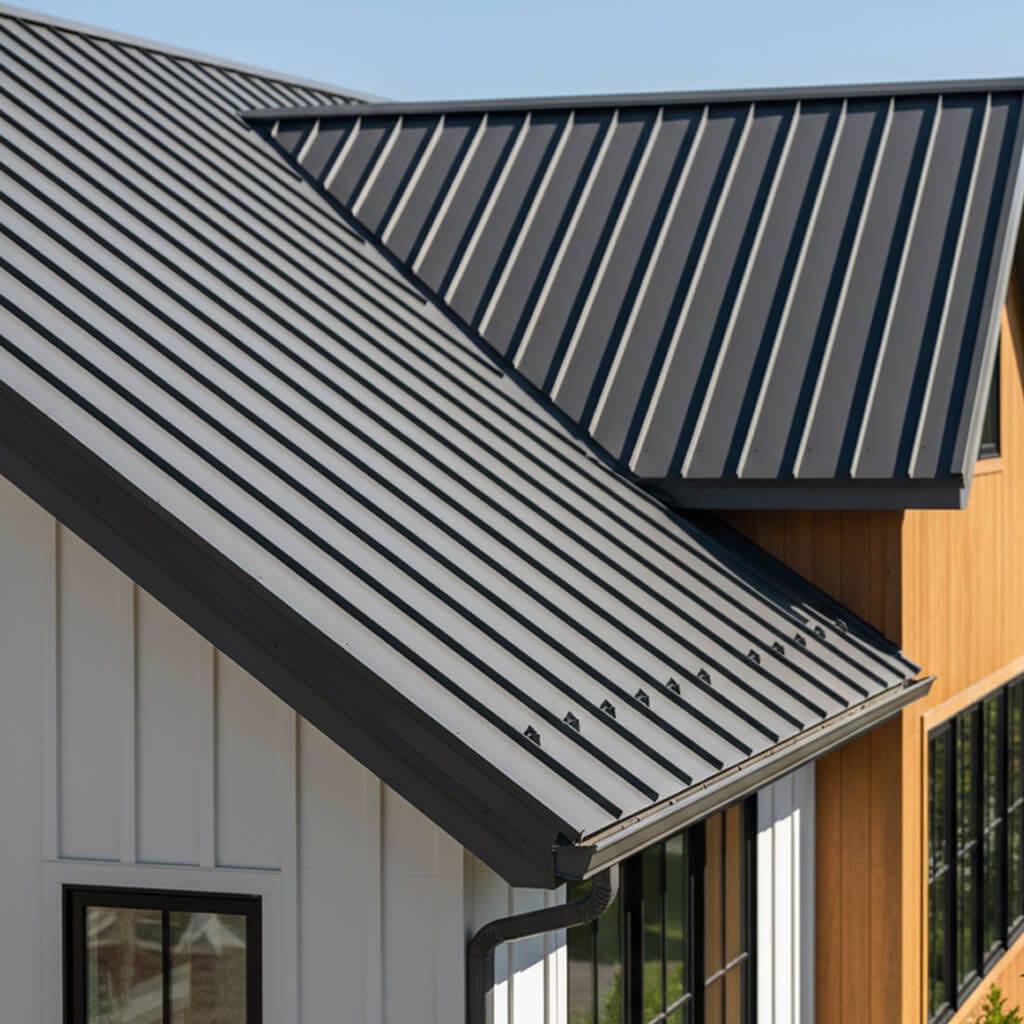
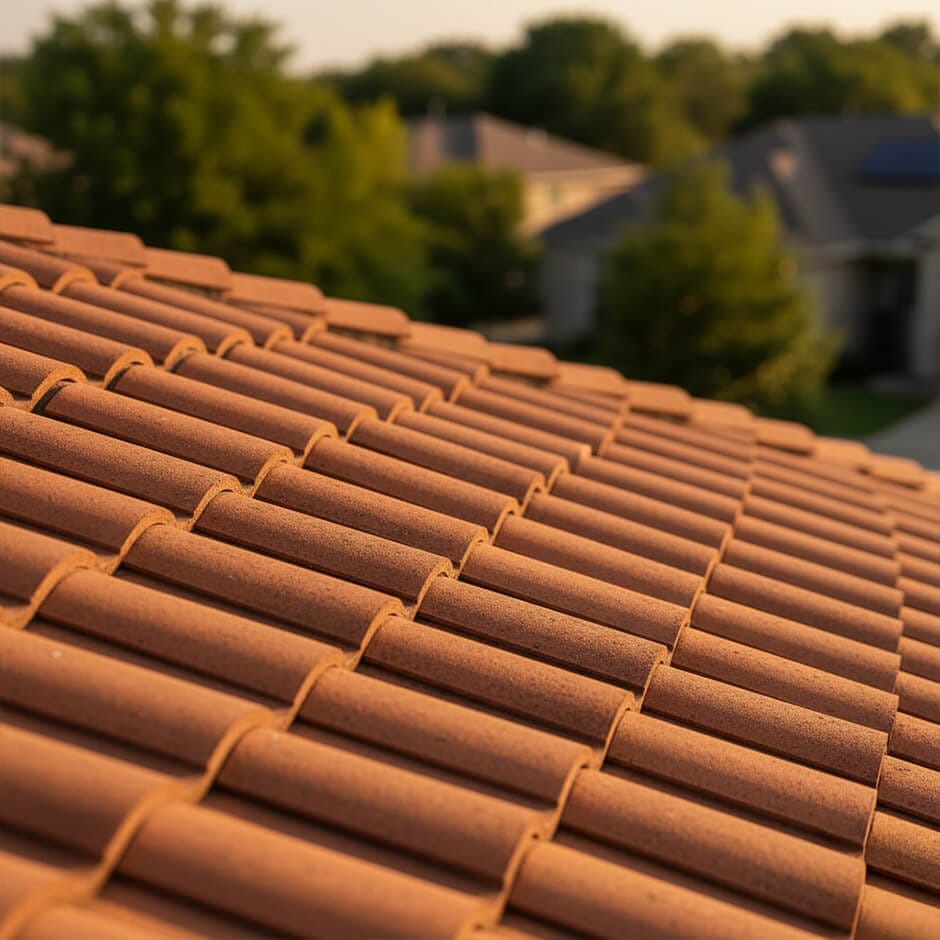
Clay tiles are naturally algae-resistant but may accumulate surface grime over time. Some manufacturers offer glazed or sealed tiles for better algae protection and color preservation. Warranties typically range from 30 years to lifetime coverage depending on product and installer certification.
Cedar shakes are made from natural wood, offering a warm, rustic look that blends beautifully with wooded or traditional homes.
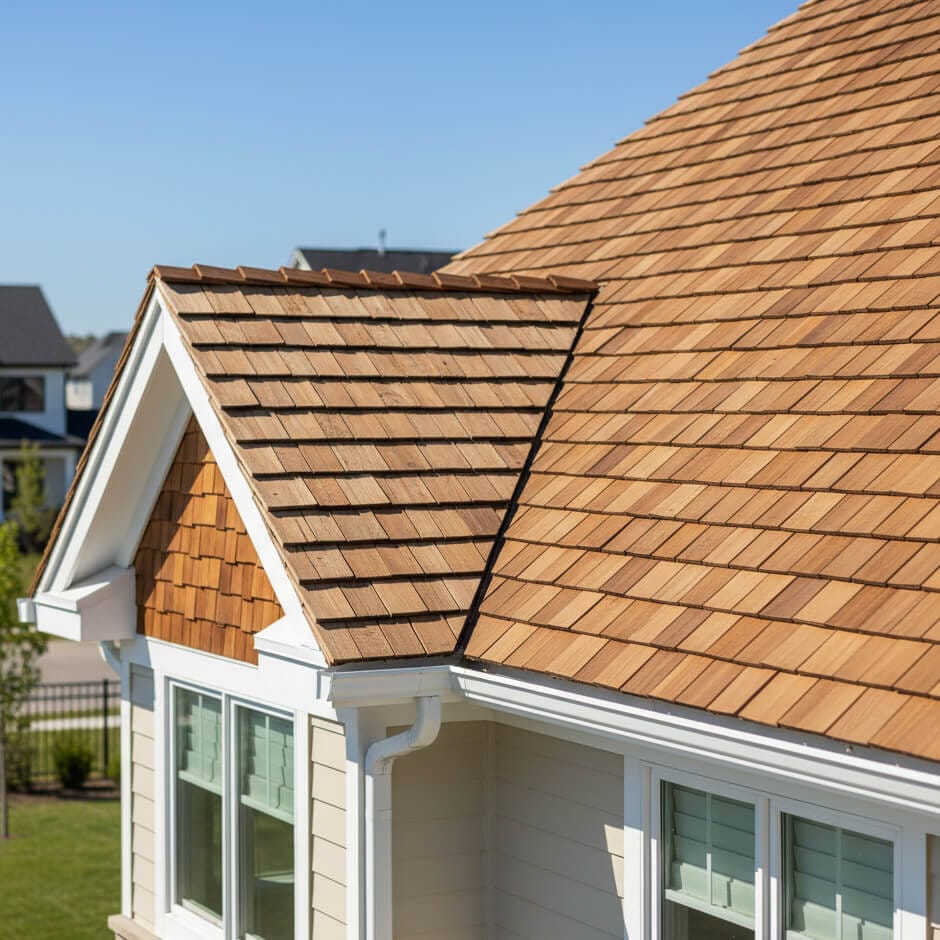
Using treated cedar and applying anti-algae preservatives can reduce biological growth. Warranties are often limited and vary by supplier, so professional installation and ongoing care are crucial.

Many composite shingles include built-in UV and algae protection. They’re also often made from recycled materials, making them an eco-friendly alternative.
Homeowners wanting the look of high-end materials (like cedar or slate) without the maintenance or structural requirements.
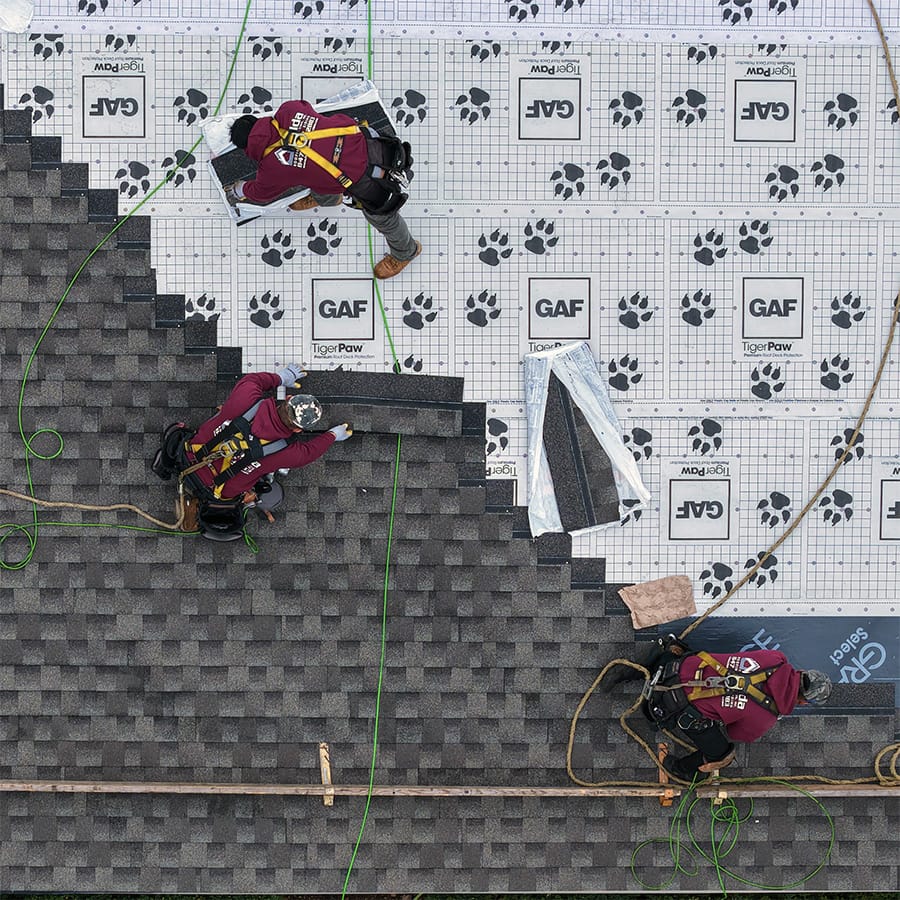
Proper underlayment is essential for any roofing system—especially in areas prone to snow, storms, or humidity.

Without proper airflow, moisture and heat can build up in the attic, leading to:
Ridge vents are installed along the peak (ridge) of a sloped roof and are one of the most efficient passive ventilation solutions for attics. They run the entire length of the roof ridge and allow warm, humid air to escape from the attic naturally.
Because warm air rises, ridge vents take advantage of convection to continuously exhaust air without requiring any mechanical parts or energy.
When properly paired with soffit vents, ridge vents create a balanced system that draws in cool air through the soffits and releases hot air through the ridge. This setup helps prevent moisture buildup, reduces attic heat, and can extend the life of the roof.
Additionally, ridge vents blend in with the roofline, offering a low-profile and aesthetically pleasing option.
Soffit vents are located under the eaves of a roof—specifically on the underside of the overhang (soffit)—and serve as intake vents in a ventilation system. Their main function is to allow fresh, cooler air to enter the attic, replacing the hot air that exits through ridge or other exhaust vents.
Without adequate intake, exhaust vents like ridge vents or attic fans cannot function effectively, which can result in attic overheating or moisture problems.
Soffit vents come in various styles, including continuous strips, circular or rectangular panels, and perforated soffit boards. They are essential for maintaining a steady airflow and ensuring a healthy, balanced ventilation system. Proper installation and unobstructed airflow are key; insulation should never block these vents.
Attic fans are active ventilation systems that use powered motors—typically electric or solar—to forcefully expel hot air from the attic. They are often mounted on the roof or gable walls and are triggered by a thermostat or humidity sensor.
Attic fans can significantly reduce attic temperatures during hot weather, which in turn can help lower indoor cooling costs and reduce stress on HVAC systems.
However, attic fans must be used with caution: if not properly balanced with adequate intake (like soffit vents), they can create negative pressure that draws air from the conditioned living space, potentially increasing energy costs. Despite this drawback, when installed correctly, attic fans can be an effective solution for homes with inadequate passive ventilation or in regions with high heat and humidity.
Partnering with a knowledgeable contractor ensures your attic has the right balance of intake and exhaust ventilation. A roof inspection should ALWAYS include both inside and outside the home, checking the attic to assess the health of the underside of your roof.
Quality roofing materials should come with robust warranties that protect against algae growth, wind damage, and manufacturing defects. Here are examples:
Always verify if your contractor is certified by the manufacturer, as this can significantly improve your warranty coverage. Please visit our warranties page for more information on how we apply the guarantees mentioned above.
Choosing a roofing material isn’t just about today—it’s a decision that affects the next several decades of your home’s comfort, curb appeal, and protection.
At Holda Roofing and Siding, we help homeowners find the perfect match by factoring in:
Whether you’re leaning toward asphalt shingles, intrigued by the timeless charm of cedar, or ready to invest in the long-lasting power of metal or composite, our team is here to guide you every step of the way.
Reach out today for a personalized consultation and let’s find the best roof for your home—together.
With over twenty years in business and hundreds of satisfied customers, we know what it takes to properly maintain a home. Join the family of satisfied homeowners who trust Holda Construction Roofing and Siding for all their roofing and siding needs.
We look forward to working with you!
Address
317 W Colfax St. Suite 102
Palatine, IL 60067